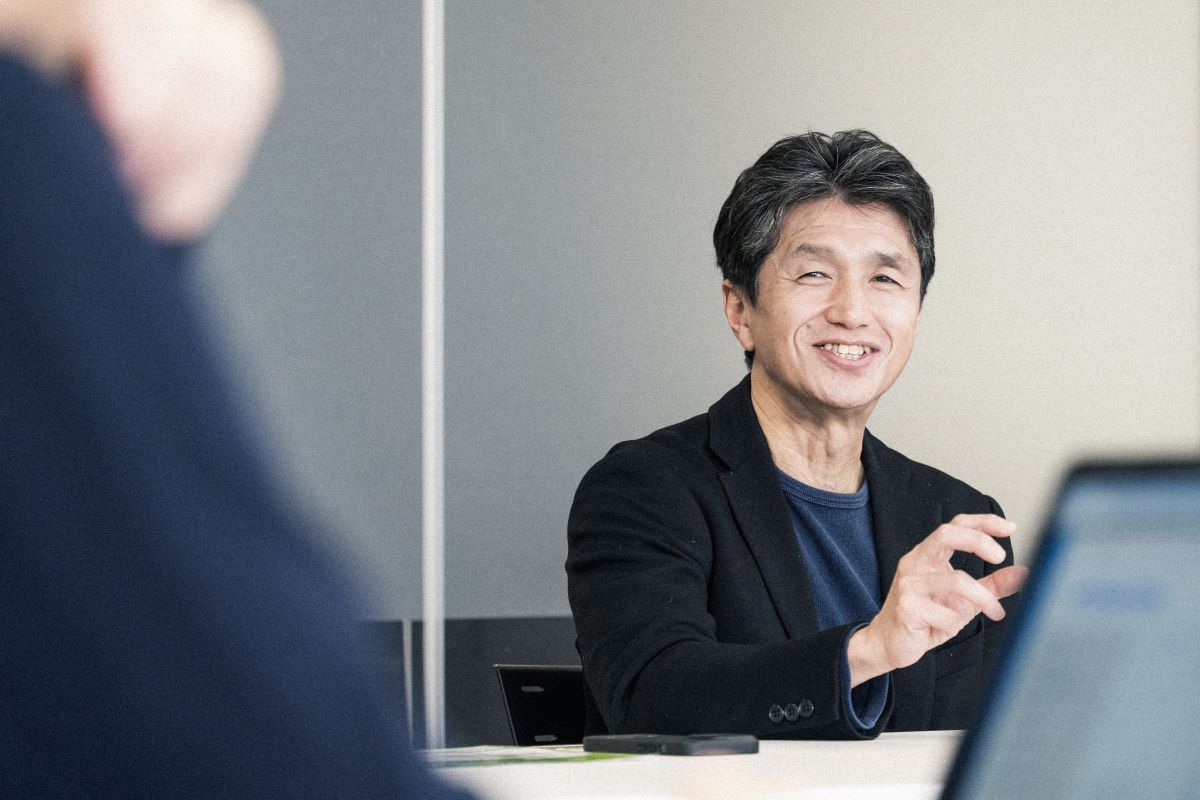The birth of SOMPO Digital Lab
Sompo Holdings pursues its purpose of striving “for a future of health, wellbeing and financial protection” through two core business pillars. SOMPO P&C delivers property and casualty insurance worldwide, while SOMPO Wellbeing compounds our life insurance and nursing care businesses in Japan. As one Sompo Group, our aim is to support people in leading healthier, more meaningful lives.
Recognizing the importance of digital technology in bringing this purpose to life, we established SOMPO Digital Lab (SDL) in 2016. SDL specializes in driving digital transformation (DX) across the Sompo Group and creating new businesses that shape a better future. While SDL refers collectively to the digital functions within Sompo Holdings, it also has a strong international presence with hubs in both Tokyo and Silicon Valley. The Tokyo hub is represented by our Digital & Data Strategy Department.

Our organization’s journey
SDL was born out of a deep sense of urgency shared by our leadership, who saw how Japanese society was changing. Our core businesses, including auto insurance, other property and casualty insurance, alongside life insurance, are closely tied to demographic trends. As population decline and ageing continue to advance, it was clear that simply continuing our traditional business model would limit our future growth.
In response, we decided to establish lab sites in Tokyo and Silicon Valley to learn directly from leading-edge companies. We didn’t focus on the technology itself, but rather on ways of working – design thinking, agile development, and collaboration across diverse talent to generate value quickly. These approaches had a significant impact on me personally.
This is why our very first priority in launching SDL was to attract digital talent. Initially, we launched SDL with just five employees who had experience only in the insurance industry. Today, we have grown to more than 200 members, with 70–80% coming from other industries.

I believe this is the result of making a significant investment and focusing on external recruitment early on, especially compared to peer companies. We also shifted our development model from the traditional waterfall approach to an agile approach. This has enabled us to work hand-in-hand with business units from the planning stage, continuously contributing to the generation of new value and bringing us one step closer to having “Digital as Usual” across the entire company.
What we mean by “Digital as Usual”
This is a term we use to describe a state where digital technology is not something special or separate but rather is ingrained as a normal, everyday part of business. In fact, at companies like Apple or Google, you won’t find a “Digital Strategy Department.” Instead, engineers and designers are part of every business division. Our vision is based on this kind of culture and way of working.
Ultimately, we aim for a future where every business unit has its own digital talent, leading to the evolutionary dissolution of our department itself. At the same time, engineers and designers still benefit from strong horizontal connections across the Group, so we are exploring a hybrid organizational structure that maintains technical expertise while working in parallel with our business. We are getting closer to our vision of “Digital as Usual,” as it is becoming second nature for digital experts from our department to be involved from the initial planning stages. On the other hand, at the operational level in insurance and nursing care, we still have some way to go. A key challenge ahead is how to spread our vision across the entire Group.

Initiatives to realize the vision
While new services continue to emerge from digital frontiers like Silicon Valley, Japan’s economy still struggles to shake off a sense of stagnation. If part of the cause lies in the traditional culture of large corporations, then our project – challenging old industry images – can also help drive change across society as a whole.
Masatomo Nakajima
We are advancing a wide range of initiatives. Here, I’d like to showcase two examples.
The first is Sompo Japan’s reform project, SJ-R. Amid a decline in car ownership and new housing driven by Japan’s population decline, sustaining corporate growth in the domestic market demands fundamental transformation. One example is in a division at Sompo Japan that deals with insurance claims from customers involved in accidents, where we rethought communication systems to allow use of the app-based instant messaging and social networking service LINE, in addition to existing telephone-based customer communications. The shift greatly improved operational efficiency. By integrating LINE communication with our core systems, we are also driving transformation across the entire process.
The second example is about how we are leveraging generative AI. Beyond improving efficiency, we are exploring new ways to deliver value to customers and insurance agents. We are implementing AI-powered features such as automated responses, draft message generation for chat, and real-time answers linked to databases.
How to succeed in digital transformation
We believe two key factors underpin our success so far: adopting agile development and building strong in-house capabilities. For each product, we ask a dedicated product owner from the relevant business unit to work alongside SDL’s engineers and designers in an agile development framework. New tools are first piloted at a model branch or office, allowing us to quickly gather frontline feedback and refine the system through a flexible, iterative approach.
For example, in our Hiroshima claims service division, we trialed an AI system that automatically assigns cases to individual staff members – a task that had previously depended heavily on individual judgment. The feedback from employees has been overwhelmingly positive, with comments like, “workloads are now more evenly balanced” and “the assignments feel fair.” As a result, we’ve boosted efficiency and enhanced employee satisfaction.
Customer and on-site needs evolve over time, so we moved away from the old mindset of “our final goal is release.” Instead, we now prioritize agile improvement based on on-site feedback. Instead of relying on outsourcing, we have built an in-house development team that works as “on team” with our business units to drive project forward. This has also led to a change in mindset, empowering employees to use digital technology themselves to create new services.

Insurance and nursing care are vital parts of social infrastructure – services that society can’t function without. Precisely for this reason, we must keep evolving to forge a new future. By leveraging the strengths the Sompo Group has developed over many years, we are cultivating a new culture rooted in flexibility and speed.


